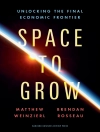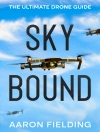In X-15, the exciting story of the X-15 – the iconic rocket plane of the Cold War space race – is recounted by John Anderson , curator of aerodynamics at the Smithsonian National Air and Space Museum. This experimental space plane was on the cutting edge of hypersonic aerodynamics, and its winged reentry from space foreshadowed the development of the Space Shuttle decades later. Launched from the wing of a modified B-52 bomber – again foretelling a concept that would be used decades later, in this case by Space Ship One and Space Ship Two – the ship rocketed higher and faster than any manned aircraft of the time. Designed to approach seven times the speed of sound, it was the first hypersonic aircraft ever created and was engineered to function both in the Earth’s atmosphere and at the edge of space. Illustrated with period NASA and USAF photographs, as well as exclusive Smithsonian photography of the first of three X-15s built, X-15 captures the risks and dangers of the X-15 program as Anderson follows the test pilots (including Neil Armstrong) who pushed the very limits of their piloting skills to master groundbreaking experimental technology. Even with the fatal crash of the third X-15, the overall success of the program helped pave the way for NASA to continue to the Moon – and this is the definitive, expertly curated, and beautifully illustrated account of its development.
Про автора
<p><b>Mr. Passman</b> was the chief aerodynamicist for the Bell X-2, the first airplane to fly faster than Mach 3. He shared and contributed to the heady research airplane environment that pervaded the 1950s and ’60s, and much of this book reflects his experience in that environment.</p>












